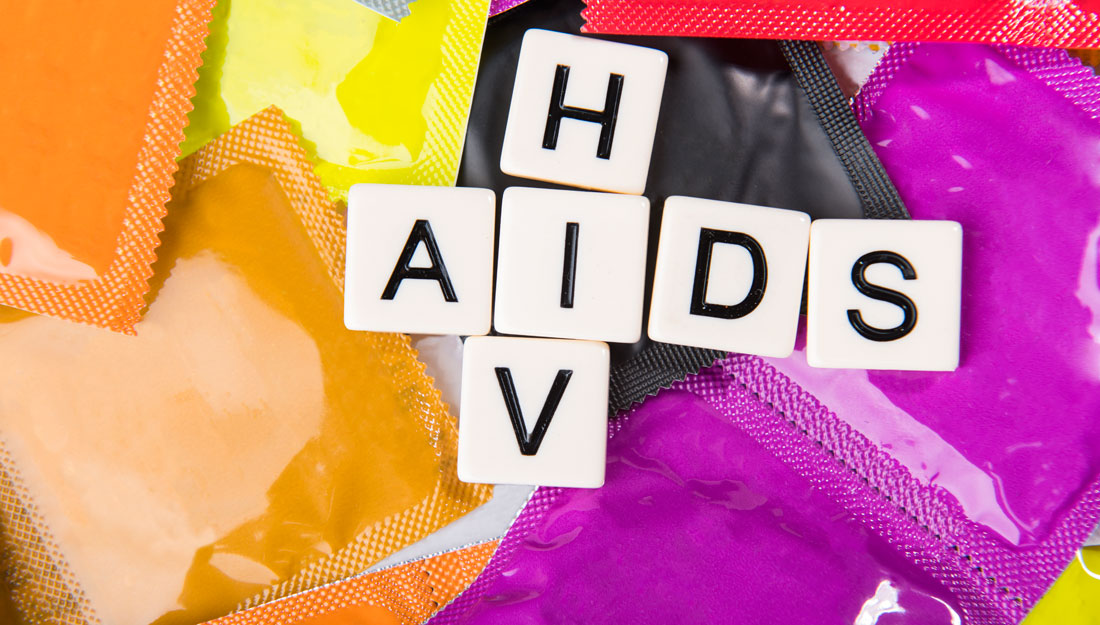- Christina Sumners
- Pharmacy, Research, Show on VR homepage
Nixing latex: Building the perfect condom with hydrogel, antioxidants
Texas A&M researcher sets out to create better condom—one that prevents HIV transmission and enhances sexual experience

Texas A&M researcher sets out to create better condom—one that prevents HIV transmission and enhances sexual experience
In 2014, there were about 36.9 million people living with HIV and about 2 million were infected. The virus, which causes AIDS, is commonly spread through sexual activity, and although antiretroviral therapy has turned the once-universally fatal condition into a chronic one, 1.2 million people died as a result of AIDS-related diseases last year.
The United Nations group tasked with combating HIV and AIDS is advocating a “rapid scale-up of essential HIV prevention and treatment approaches.” It’s well accepted that condoms are one way to help prevent transmission, but they’re not a perfect solution. Mahua Choudhury, PhD, assistant professor at the Texas A&M Health Science Center Irma Lerma Rangel College of Pharmacy, is trying to make condoms both better and something people will actually want to use.
Her proposed male condom, which was featured in Men’s Journal’s 9 Condoms of the Future, has some innovative properties.
First, unlike most male condoms, it is not made of latex, but instead from a new material—a strong, elastic polymer called hydrogel, which is a gel made primarily of water that has a number of applications already, including contact lenses and other medical uses. “Some people are allergic to latex, and others are just not comfortable with it,” Choudhury said. “Therefore, we wanted to create a novel material.”
To enhance its disease-preventing abilities, the condom will be enmeshed with a plant-based antioxidant that has been shown to have anti-HIV properties. This would be especially important if the condom were to break, for example, and thus neutralize its barrier effect. “If there is an accident or something happens,” Choudhury said, “this antioxidant will be released and prevent the replication of HIV.”
This antioxidant also has stimulant properties that can enhance the sexual experience and feelings of pleasure by promoting several physiological stimulations, all of which can help maintain erection and increase sexual pleasure. “If we succeed, it will revolutionize the HIV prevention initiative,” Choudhury said. “We are not only making a novel material for condoms to prevent the HIV infection, but we are also aiming to eradicate this infection if possible.”
Finally, like all condoms, this one would also help prevent other sexually transmitted diseases and unplanned pregnancy.
For her proposal for this new type of condom, Choudhury was one of 54 applicants selected out of 1,700 to receive the Grand Challenge in Global Health award from the Bill & Melinda Gates Foundation, which funds individuals worldwide to solve persistent global health challenges. Their interest this round: an extremely low-cost, latex-free condom.
The condom material is essentially ready. Choudhury and her team have created the hydrogel and embedded the antioxidant, and it is going through the patent process now. “We are trying to find how fast the enmeshed antioxidant can release,” she said, “and we don’t know if it will automatically release, or if you have to apply pressure.” This is something she and her team will look at in the testing process, which will happen in the next six months or so.
Choudhury hopes the condom can be made available to everyone, especially those who otherwise might not have access, such as people in rural areas of developing countries. “If you can make it really affordable, and really appealing,” she said, “it could be a life-saving thing.”
Media contact: media@tamu.edu


